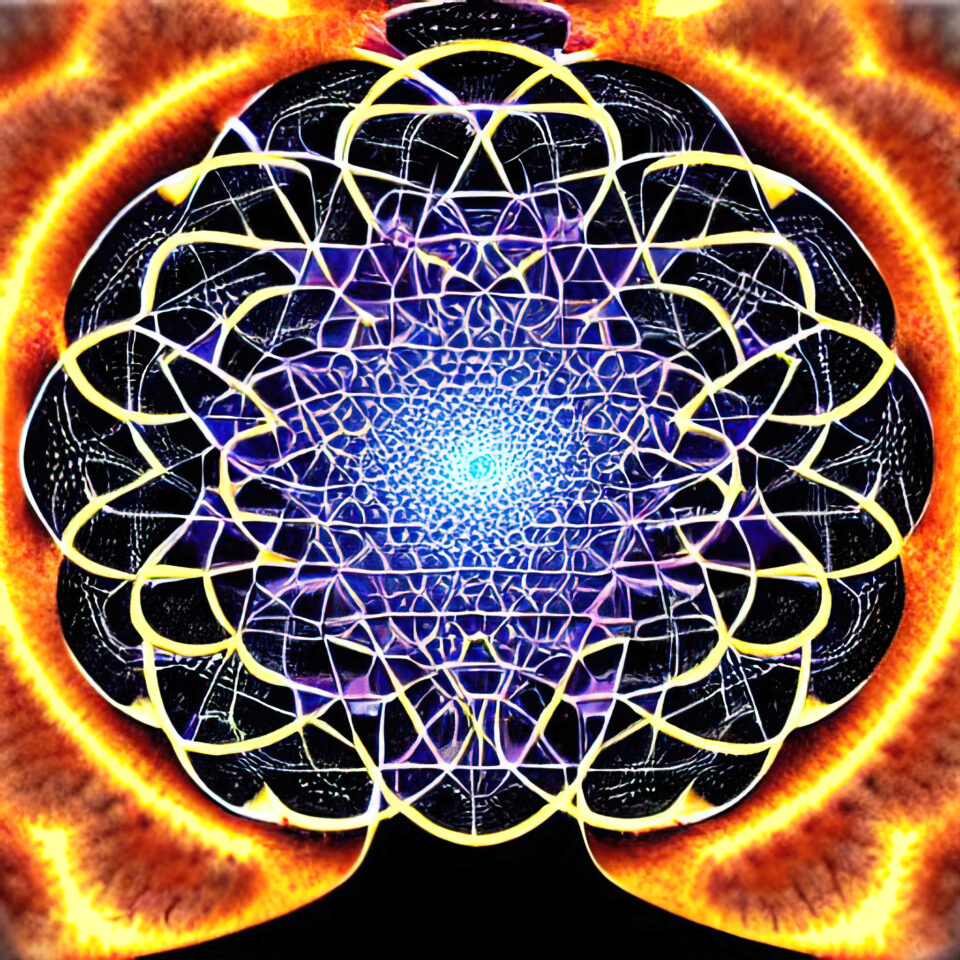Fractal geometry is a branch of mathematics that focuses on the description of geometric objects that have properties of self-similarity, that is, the property of having a similar structure to itself at any level of magnification. Fractal geometry differs from traditional geometry, which focuses on perfectly regular and defined geometric objects, such as triangles, squares, and circles.
The Mandelbrot set is a famous fractal that is generated by a simple mathematical algorithm. It is named after the French mathematician Benoit Mandelbrot, who is considered the father of fractal geometry and who introduced the term “fractal” in 1975. The Mandelbrot set is defined as the set of complex numbers c for which the function f(z) = z^2 + c, with z starting at 0, does not diverge when iterated. The function is iterated repeatedly, and for each point in the complex plane, the sequence of iterates is calculated. A point c is in the Mandelbrot set if the absolute value of the function is always less than or equal to 2. When the Mandelbrot set is graphed, it produces a highly detailed and infinitely complex pattern that is symmetrical about the origin. The boundary of the Mandelbrot set is a fractal, meaning that it has a infinite level of detail and self-similarity. The set also exhibits a kind of “chaos” since small changes in the initial value of c can greatly change the behavior of the sequence of iterates. The Mandelbrot set has many interesting properties, such as the presence of “miniature” copies of the whole set, called “Mandelbrot islands” and “Mandelbrot dust” which are smaller copies of the set that appear as you zoom into the set. The Mandelbrot set is not only a fascinating mathematical object, but it also has many practical applications. For example, it is used in the study of dynamical systems and chaos theory, as well as in computer graphics and art. The Mandelbrot set has been used to generate a wide variety of images, from abstract patterns to realistic landscapes.

Here’s a list of famous fractals.
- The Mandelbrot set
- The Julia set
- The Sierpinski triangle
- The Koch snowflake
- The Dragon curve
- The Cantor set
- The Peano curve
- The Lorenz attractor
- The Barnsley fern
- The Harter-Heighway dragon
- The Apollonian gasket
- The Mandelbrot tree
- The Mandelbar set
- The Mandelbulb
- The Mandelbrot percolation
Please note that this list is not exhaustive and there are many other fractals that are famous and interesting. Also, it’s worth mentioning that some of the fractals listed are a variation of the Mandelbrot set or Julia set.
One of the key concepts of fractal geometry is the fractal dimension, which describes the complexity of a fractal object. In traditional geometry, the dimension of an object is a whole number that corresponds to the number of coordinates needed to specify a point within the object. For example, a point has a dimension of 0, a line has a dimension of 1, a surface has a dimension of 2, and a solid has a dimension of 3. However, fractals are not regular geometric shapes, and their dimension cannot be described by a whole number. Instead, the fractal dimension is a decimal number that reflects the level of complexity of a fractal. For example, the fractal dimension of the Mandelbrot set is around 2.58, which is different from the dimension of any traditional geometric shapes. There are several ways to calculate the fractal dimension, the most common of which is the box-counting method. This method involves covering the fractal with a grid of boxes of various sizes and counting the number of boxes that intersect the fractal. The fractal dimension is then calculated from the relationship between the number of boxes and the size of the boxes.
Fractal geometry has proven useful in a wide range of fields, including physics, biology, engineering, art, and finance. In physics, fractal geometry has been used to describe the structure of some natural systems, such as clouds, rivers, coasts, fractures, and rocks. In biology, fractal geometry has been used to describe the structure of some living organisms, such as algae and blood vessels. In engineering, fractal geometry has been used to design more efficient antennas and signal filters. In art, fractal geometry has been used to generate interesting and complex images and sculptures. In finance, fractal geometry has been used to analyze financial markets and develop price forecasting models for financial instruments.
All images and all text in this blog were created by artificial intelligences

